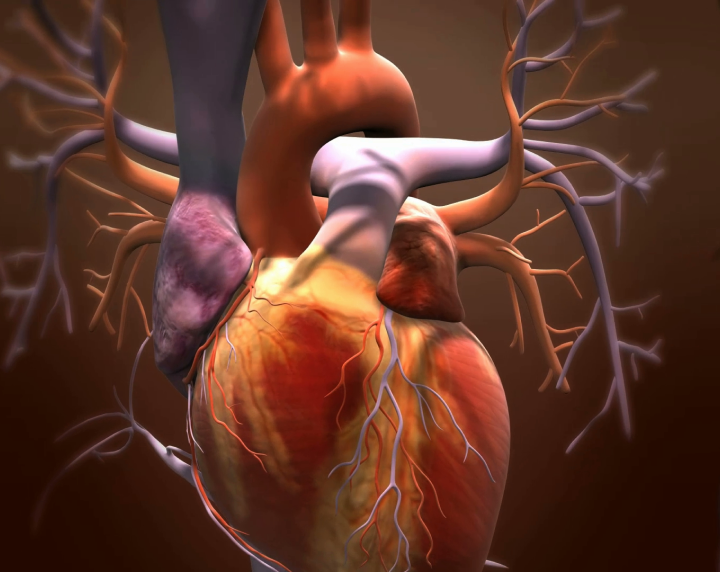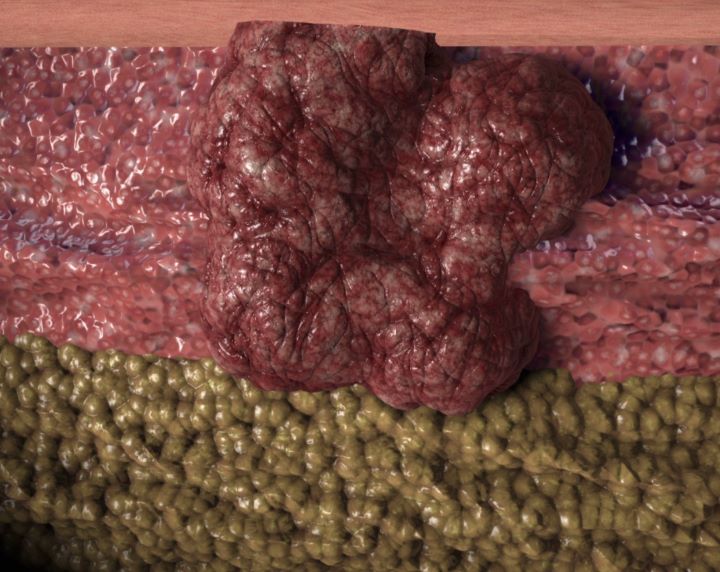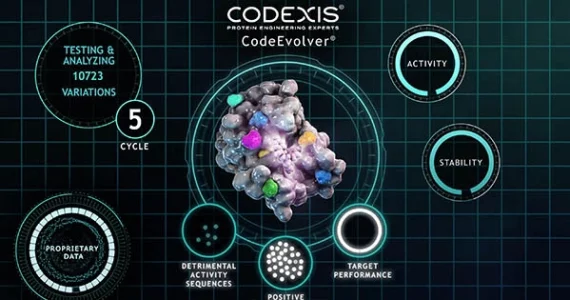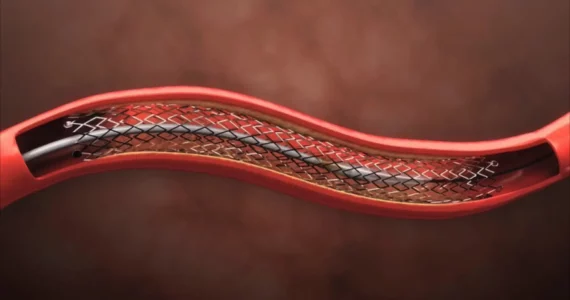Welcome to Delaplaine Creative
Delaplaine Creative is a boutique Medical Animation Studio dedicated to delivering stunning ЗD animation to the medical device, pharmaceutical, biotechnology and healthcare industries.
Our Work
Welcome to our Demo Reel. Showcasing our best work can be a very tricky thing to do given that many of our best projects are under NDA and can not be shown. We have tried to give you a sense of what magic is possible in the world of 3D Medical Animation, motion graphics, and video production as well as a feeling for the depth and breadth of our talent and capabilities.
It is our hope that after watching our reel, you walk away with the understanding that we can do pretty much anything you can imagine and that you are inspired to reach out so we can set up a call to explore how we might make some magic together.
×The Sacroiliac joint (SI joint) located in the pelvis links the ileum to the sacrum. This joint is an essential component for shock absorption and energy transfer during walking and other activities. About 25% of the lower back pains originate in the SI joint. When non-surgical therapy fails, minimally invasive SI joint fusion is an option to consider. It is intended for sacroiliac joint dysfunction that is a direct result of sacroiliac joint disruption and degenerative sacroiliitis. The animation in the video depicts the step-by-step details of the procedure. The patient lies in a prone position, under constant X-ray-based imaging called fluoroscopy. It is a minimally invasive procedure minimizing trauma to the surrounding bone and soft tissue. The surgeon uses a specially designed system to guide the instruments to prepare the bone and insert the implants. The entire procedure is carried out through a 3cm incision along the side of the buttock.
×Chronic idiopathic constipation (CIC) and Irritable Bowel Syndrome Constipation (IBS-C) are some common conditions causing constipation in a wide range of the population. The difference between the two is the presence of abdominal pain as a predominant symptom in the latter. Although the exact cause is unknown, the possible cause for constipation is the lack of fluid in the lumen of the intestines due to various factors. To solve this problem, Plecanatide increases the cGMP activity, which in turn increases the fluid levels, normalizing the bowel movements, which his has been smoothly demonstrated in the animations. Plecanatide acts on the GCC-C receptors in the epithelium of the small intestine, stimulating cGMP synthesis. This activates Chloride channel openings, secreting chloride into the intestinal lumen. Water follows the chloride into the lumen. The increased fluid levels in the lumen soften the stool and help increase bowel movements.
×Tearing of the Anterior Cruciate Ligament (ACL) is common in athletes. It is a painful condition, leaving the knee unstable and unable to perform normal functions. They are common in sports that involve start-stop actions and sudden changes in direction. In the video we see a professional skier describe his experience with an ACL tear. The usual treatment option for the injury is ACL Reconstruction. But it comes with concerning drawbacks such as secondary infection sites in the donor area and kneeling pain. The animation introduces us to the revolutionary Bridge Enhancement ACL Restoration (BEAR) implant. The whole procedure is demonstrated in this clear, concise animation. The BEAR implant is made up of special proteins that bridge the gap between the torn ends of the ACL. Blood is drawn from the patient and is added to the implant. The implant is slowly absorbed and replaced by viable cells of the ACL tissue. This continues until the implant is completely absorbed and the ACL is repaired.
×Patients with short metatarsals often have associated pain and difficulty in daily activities, such as walking and wearing shoes, as well as a negative psychological impact. This animation demonstrates how Virex Mini-rails are used for lengthening of the first metatarsal. The whole procedure is explained effortlessly step-by-step. First of all, the size of the rails and the half-pins are decided. The position of the half-pins is decided and the rails are prepared. The location of the two half-pins is marked with a surgical pen. A wire is used to puncture the cortex perpendicular to the bone. It is removed and replaced with a half-pin. This step is repeated for a second half-pin. After two pins are placed, the rail is slid over the pins. Using the rail as a template the remaining two pins are inserted. The screws are tightened without locking them, to allow the rail body free movement to align it parallel to the metatarsal shaft. The rail is now removed and a mid-shaft cut is given, making sure the periosteum remains intact. The mini-rails are re-engaged, repeating the process of tightening the screws and adjusting the orientation according to compression or distraction.
×The arteries that supply blood to the heart are called coronary arteries. Atherosclerosis may occur over time causing plaque build-up, narrowing the lumen, and increasing the risk of a heart attack. Percutaneous Intervention (PCI) procedures are performed to correct this anomaly. The GuideLiner catheter is used to access discrete regions of coronary vasculature and to facilitate the placement of interventional devices. In the animation, we see that the GuideLiner catheter is back loaded onto the previously inserted guide wire. The GuideLiner catheter is then advanced through the hemostasis valve and into the guide catheter. Under fluoroscopy, the GuideLiner is advanced beyond the guide catheter into the desired location within the vessel. During an interventional procedure, the interventional device is backloaded over the existing guide wire and advanced through the GuideLiner catheter, into the desired vascular space. The GuideLiner catheter is also used in diagnostic capacity by injecting a radio-opaque dye to find a blockage in the vessels.
×Cardiac Arrest occurs when the heart stops beating suddenly. The lack of blood flow can cause ischemia in the starving brain and other tissues or organs. This leads to a series of events that are destructive to the brain tissue. Rapid hypothermia has been shown to help control inflammation and reduce brain cell death. The animation helps us understand the different methods used to achieve hypothermia. Ice water technique and Cold lavage require expert medical personnel and a long time to achieve therapeutic hypothermia levels. Suspended Liquid Ventilation, using the Portable Liquid Ventilation system is the latest and most effective method to achieve hypothermia within minutes. The entire procedure is effortlessly explained in the animation. The patient’s lungs are used as heat exchangers. Ice-cold liquid (perfluorocarbon) fills the lungs by the LVS delivery tube through the endotracheal tube. The ice-cold perfluorocarbon removes the heat from the blood and delivers oxygen. This cools the blood, which further cools the tissues as it travels.
×The human heart serves to pump oxygenated blood to every corner of the body, beating 100,000 times a day. Adverse conditions such as increased blood pressure or heart attack causes cardiac muscle damage, decreasing its pumping capacity. This is called cardiomyopathy.
To compensate for this anomaly, the heart works harder. This increases the ventricle size leading to a large, round shaped heart, called dilated cardiomyopathy. To prevent or reverse the dilation, the volume of the ventricle must be reduced by thickening its walls.
For this purpose, the pioneer treatment by Lonestar Heart called Algisyl
is introduced. It is an implantable hydrogel based on marine algae. Available in minimally invasive catheter delivery system, Algisyl is injected into the muscle wall. As clearly shown in the animation, the highly compatible Algisyl reverses the cardiomyopathy; hence, reducing wall tension, improving
contractility and decreasing clinical symptoms of advanced heart failure.
For years, treatment for a torn ACL has been a matter of great importance. Although there exist many drawbacks and side effects, ACL reconstruction is the usually preferred option. A new revolutionary product called Bridge-Enhanced ACL Repair (BEAR) implant has been introduced. The BEAR implant is based on the discovery that the ACL can perform all the critical functions for healing to occur, except scaffold/bridge formation. As clearly depicted in the animation, sutures are placed into the torn ACL. After the autologous blood is added to the bare implant, it is placed over the torn ACL, acting as the bridge between the two ends. Within 8 weeks, the implant is resorbed and replaced by native cells, collagen, and blood vessels. According to MRI, at 24 months, the size, geometry, and tissue composition of the treated area be more like native ACL, rather than an autograft. The long-term results are on par with ACL reconstruction. 86% of the patients treated went back to sports within 1 year.
×A bridge of tissue that connects one area of the skin to another is called a pedicle. The pedicle is used to bring blood and nerve supply to the nipples in breast surgeries. As it is depicted in the animations, the breast is supplied by the lateral thoracic and internal mammary arteries. The animations explain the classification of the breast very clearly. The superior pedicle is formed by the 2nd inter-costal artery, preserving 3-4cm of glandular tissue on either side. The rest of the glandular tissue can be incised, as clearly shown. The medial pedicle is formed by the 3rd inter-costal artery. The base of the pedicle extends from the 4 to 11 o’clock position. The Inferior pedicle is supplied by the 4th and the 5th inter-costal arteries. 4th inter-costal artery enters from the deep surface whereas the 5th inter-costal artery is a surface feeder. The central pedicle is formed by the deep 4th inter-costal artery. An island of central tissue is supplied by this artery. The lateral pedicle is preserved by the superficial branch of the lateral thoracic artery. This pedicle begins at the 11 o’clock position and ends at the 8 o’clock position. All the areas that can be incised are visually demarcated in this animation.
×Codexis is on a mission to create the best proteins to deliver performance for new applications. The Code Evolver technology engineers specific proteins for pharmaceuticals, food ingredients, molecular diagnostics, animal feed, and other value-creating applications. The entire process of this involved procedures is very simply illustrated in the animations. A protein is defined by its sequence of amino acids. Finding the right combination of amino acids among the infinite possibilities is a challenge. Code Evolver, using its protein libraries, algorithms and expertise select the most qualified starting sequence to start the process. In the animation, the visual depiction of substrate reacting with a protein is measured on different scales. Code Evolver technology rapidly learns the relationship between protein sequence changes and their impacts on protein function, thus engineering intelligent rather than random improvements. Thousands of variations are chosen and created in the labs. They undergo rapid testing to generate data, based on which new intelligently guided sequence variations are created. Every round of creating and testing results in better and improved protein sequences. Ultimately, this results in the protein that reaches the target performance.
×Mitral Regurgitation (MR) is a disorder in which the mitral valve of the heart does not close properly. Mitral touch is a new revolutionary device that allows a surgeon to treat the majority of patients with MR. The working of the device is easily explained in the animation showing both the external and internal views. Externally, the anterior arm of the device is placed in the transverse sinus, with the posterior pad placed just below the AV groove and centered on the mitral valve. The surgeon applies gentle pressure on the posterior pad, rotating it downwards. This provides sub-valvular support and reduces chordal tension by bringing dilated left ventricle and papillary muscles in. Once confirmed that the connecting arm is free of the heart surface, the device is anchored in place by 3-4 helical tags. The cross-sectional view of the heart is shown during the procedure. It shows how the LV is treated and the MR is reduced with the use of the mitral touch. For the first time, the surgeon can provide Patient-Specific Optimal MR Reduction, LV reduction, and Subvalvular Support.
×Our Projects

In Vitro Fertilization
Infertility is a worldwide health concern that affects millions of people of reproductive age. According to available data, infertility affects 48 million couples and 186 million people worldwide. The most effective kind of assisted reproductive technology is In-Vitro Fertilization.
As clearly elucidated in the animation, In-Vitro fertilization involves the retrieval of mature eggs from the ovaries, which are then combined with sperm in a lab. The fertilized embryo is then placed in the uterus. During the procedure, as shown in the illustration, the doctor locates the follicles in the ovaries and removes them with a hollow needle. Sperm is then introduced to the eggs. The fertilized embryo is placed directly into the uterus. The success of the procedure depends on many different factors. In-vitro fertilization offers the highest success rate of all the different fertility treatments.

Hip Joint Replacement
The large and flexible hip joint provides us with a wide range of movement. It also carries most of the weight of the body. As we grow old, conditions such as osteoarthritis, rheumatoid arthritis, hip fracture, and septic arthritis can cause damage to the hip joint. Mobility is reduced and the patient suffers pain even at rest. A hip replacement procedure is performed on the patient where the hip joint is replaced with an artificial joint, also known as an implant.
The animation demonstrates the shape and position of the implant in the joint socket. Under anesthesia, the top of the femur is removed and the inside is prepared for insertion of the artificial hip. The socket in the pelvis is prepared for the ball section of the new joint. The stem is inserted into the femur with the ball component is placed on the end of the stem. The entire joint is fixed into position. With rehabilitation, the previous pain subsides and mobility is regained.

Stem Cells Treatments
Stem cells are the raw materials of the body, the cells that give rise to all other cells with specific roles. Stem cells divide to generate new cells known as daughter cells. These daughter cells may differentiate to become specialized cells with a more particular role, such as blood cells, brain cells, heart muscle cells, or bone cells. No other cell in the body has the potential to naturally produce new cell types.
Stem cell treatment, also known as regenerative medicine, uses stem cells or their derivatives to enhance the repair response of defective, dysfunctional, or wounded tissue. It is the next step in organ transplantation and utilizes cells rather than donor organs, which are in short supply.

Human Heart
The human heart serves to pump oxygenated blood to every corner of the body, beating 100,000 times a day. Adverse conditions such as increased blood pressure or heart attack causes cardiac muscle damage, decreasing its pumping capacity. This is called cardiomyopathy.
To compensate for this anomaly, the heart works harder. This increases the ventricle size leading to a large, round shaped heart, called dilated cardiomyopathy. To prevent or reverse the dilation, the volume of the ventricle must be reduced by thickening its walls.
For this purpose, the pioneer treatment by Lonestar Heart called Algisyl
is introduced. It is an implantable hydrogel based on marine algae. Available in minimally invasive catheter delivery system, Algisyl is injected into the muscle wall. As clearly shown in the animation, the highly compatible Algisyl reverses the cardiomyopathy; hence, reducing wall tension, improving
contractility and decreasing clinical symptoms of advanced heart failure.

Root Canal Treatment
The soft center inside the tooth is called the pulp. It is made up of nerves, connective tissue, and blood vessels that nourish the tooth and help it grow. Root Canal Treatment is an endodontic procedure in which the inflamed or infected pulp is removed. If the infection or inflammation of the pulp is left untreated, it can cause pain or lead to abscess formation. To treat this condition, an Endodontist performs a Root Canal procedure under local anesthesia.
The pulp is accessed by making a small hole in the surface of the tooth and as demonstrated in the animation, removal of the pulp is achieved with special instruments called files. The root canal is cleaned and decontaminated. It is packed with a rubber-like filling material and then sealed. In most cases, a final restoration in the form of a dental crown is placed on the tooth to restore it to maximum function.

Tumor cell
The growth and division of cells in the human body are regulated. Older cells are replaced by new cells. Damaged or non-functional cells die to make room for healthier replacements. When cells grow and divide more than they should or do not die when they should, an abnormal mass of tissue is formed called a tumor. These cells are called tumor cells. Based on their ability to spread to other parts of the body, they are classified as benign or malignant.
In the animation, the stark difference between the normal cells and the tumor cells is evident. Morphologically, malignant cells have a big nucleus that is uneven in size and form, conspicuous nucleoli, and a cytoplasm that is sparse and highly pigmented or pale. Degenerative cellular activity becomes visible as evident in the animation. Malignant cells have varying amounts of microfilaments, intermediate filaments, and microtubules. The ability of a tumor cell to migrate determines its ability to invade and metastasize.

Cancer Cell Growth (tumuor growing under skin)
Cell division in the body is constantly kept under control. When Cancer is present, the body’s ability to maintain this control is reduced or destroyed completely, which results in damage to the DNA. This causes the cells to divide uncontrollably and spread into the surrounding tissue. Cancer is caused by abnormal proliferation of any type of cells in the body. Because of this, there are hundreds of types of cancer, each with distinct prognosis and treatments.
The animation illustrates an abnormal mass of tissue growing under the skin in the dermal layers. Lumps or masses of tissues under the skin can often be inflammation or lipomas that are of less concern. But, in rare cases an unexplained lump, bulge, or swelling might be an indication of a more serious problem beneath the skin. Cancerous bumps are often large, hard, and painless to the touch, and they emerge spontaneously. The mass will continue to increase in size over the next weeks and months. In a case like this, the patient must consult the doctor at the immediately.
Who We Are
ЗD Animators:
The Visual Storytellers of the healthcare industry
Established 35 years ago, we specialize in providing compellingly creative and scientifically authoritative presentations at an affordable price. At Delaplaine Creative, we use leading edge tools and visual artistry to interpret what happens inside the human body along with the devices and procedures used to heal it in a way that the audience will comprehend. Our experienced staff of animators and illustrators use a blend of deep medical knowledge and technical fortitude to bring complex concepts to life for industry leaders like Johnson & Johnson, MedTronic and Johns Hopkins Orthopedic & Spine.






What We Do
Provide Strategic Solutions
We approach each project with an understanding that creative animation and scientific accuracy are required to explain the most complex concepts and procedures to a target audience. Our clients trust that we will define a strategic solution in order to align their vision, requirements and budget.
Deliver Maximum Impact
We leverage an innovative combination of scientific accuracy, concise narrative and powerful visual artistry to create a powerful and memorable experience that will enhance brand awareness and amplify understanding. We are laser focused on delivering a messaging that is impressive and impactful whether your audience is existing customers, potential investors or federal agencies.
Why Choose Us
Our Work Speaks for Itself
As a boutique firm, we pride ourselves on being able to tailor our solutions to meet your specific goals, objectives, and budgets. Using state-of-the-art technology our highly experienced team of experts are dedicated to working closely with you to create animations & videos that are accurate, engaging, visually stunning, and deliver unparalleled impact.






What Our Happy Clients Say

Satisfaction Guaranteed
How can we make that statement?
Easy, you’re in charge…every step of the way. From concept to delivery we run every step by you and we don’t move forward till you’re satisfied. Simply put, we’re not satisfied till you are!!

